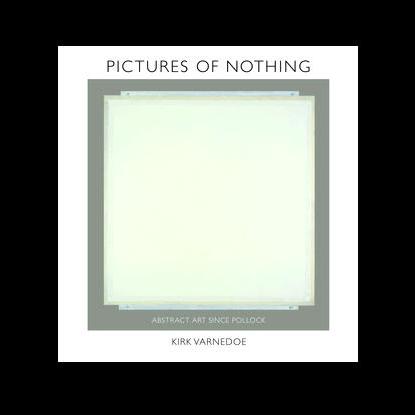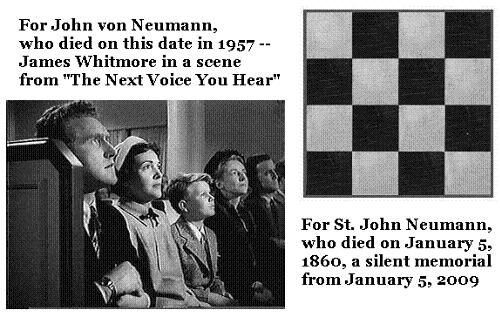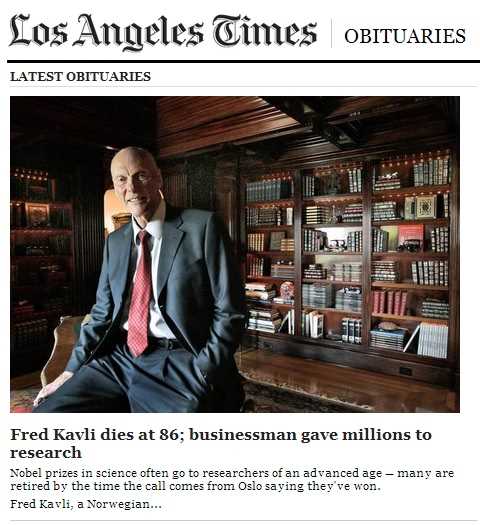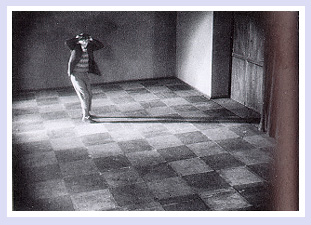The title is that of a classic 1968 New Yorker essay
by George Steiner. See previous posts on this topic.
Saturday, June 27, 2015
A Death of Kings
Saturday, November 23, 2013
Chess
Norwegian, 22, Takes World Chess Title
Quoted here on Thursday, the date of Kavli‘s death:
Herbert Mitgang’s New York Times
obituary of Cleanth Brooks—
“The New Critics advocated close reading of literary texts
and detailed analysis, concentrating on semantics, meter,
imagery, metaphor and symbol as well as references to
history, biography and cultural background.”
See also Steiner, Chess, and Death.
Friday, October 10, 2014
Autistic Enchantment
(Continued from Sept. 3, 2009)

George Steiner on chess:
"At the sight of a set, even the tawdriest of plastic pocket sets,
one’s fingers arch and a coldness as in a light sleep steals over
one’s spine. Not for gain, not for knowledge or reknown, but
in some autistic enchantment, pure as one of Bach’s inverted
canons or Euler’s formula for polyhedra."
— George Steiner in “A Death of Kings,” The New Yorker,
issue dated September 7, 1968, page 133
A related remark from Dudeney:

See also a different context for 16 squares and 322,560 arrangements.
Sunday, December 2, 2012
Realism
From the Los Angeles Times yesterday—

"Chess player Elena Akhmilovskaya Donaldson sits
in deep concentration at the U.S. chess championship
in Seattle in 2002. (Greg Gilbert / Seattle Times /
January 5, 2002)"
Linda Shaw, Seattle Times :
"Elena Akhmilovskaya Donaldson, who was once the world's
second-ranked women's chess player and eloped in 1988
with the captain of the U.S. chess team when they were both
playing at a tournament in Greece, has died. She was 55.
Donaldson, who earned the title of international women's
grandmaster, died Nov. 18 in her adopted hometown of Seattle…."
From the Log24 post "Sermon" on the date of Donaldson's death,
Sunday, Nov. 18, 2012—
"You must allow us to play every conceivable combination of chess."
— Marie-Louise von Franz in Number and Time
An October 2011 post titled Realism in Plato's Cave displays
the following image:
Cover illustration: Knight, Death, and the Devil,
by Albrecht Dürer
George Steiner and myself in Closing the Circle, a Log24 post
of Sept. 4, 2009:
“Allegoric associations of death with chess are perennial….”
"Yes, they are."
For related remarks on knight moves and the devil, see
today's previous two posts, Knight's Labyrinth and The Rite.
Friday, September 4, 2009
Friday September 4, 2009
Continued from Monday
“This is a chapel
of mischance;
ill luck betide it, ’tis
the cursedest kirk
that ever I came in!”
Philip Kennicott on
Kirk Varnedoe in
The Washington Post:
“Varnedoe’s lectures were
ultimately about faith,
about his faith in
the power of abstraction,
and abstraction as a kind of
anti-religious faith in itself….”
Kennicott’s remarks were
on Sunday, May 18, 2003.
They were subtitled
“Closing the Circle
on Abstract Art.”
Also on Sunday, May 18, 2003:
“Will the circle be unbroken?
As if some southern congregation
is praying we will come to understand.”
Princeton University Press:

See also
Parmiggiani’s
Giordano Bruno —

Dürer’s Melencolia I —

and Log24 entries
of May 19-22, 2009,
ending with
“Steiner System” —

George Steiner on chess
(see yesterday morning):
“Allegoric associations of death with chess are perennial….”
Yes, they are.
April is Math Awareness Month.
This year’s theme is “mathematics and art.”

Cf. both of yesterday’s entries.
Thursday, September 3, 2009
Thursday September 3, 2009
“Music and mathematics are among the pre-eminent wonders of the race. Levi-Strauss sees in the invention of melody ‘a key to the supreme mystery’ of man– a clue, could we but follow it, to the singular structure and genius of the species. The power of mathematics to devise actions for reasons as subtle, witty, manifold as any offered by sensory experience and to move forward in an endless unfolding of self-creating life is one of the strange, deep marks man leaves on the world. Chess, on the other hand, is a game in which thirty-two bits of ivory, horn, wood, metal, or (in stalags) sawdust stuck together with shoe polish, are pushed around on sixty-four alternately coloured squares. To the addict, such a description is blasphemy. The origins of chess are shrouded in mists of controversy, but unquestionably this very ancient, trivial pastime has seemed to many exceptionally intelligent human beings of many races and centuries to constitute a reality, a focus for the emotions, as substantial as, often more substantial than, reality itself. Cards can come to mean the same absolute. But their magnetism is impure. A mania for whist or poker hooks into the obvious, universal magic of money. The financial element in chess, where it exists at all, has always been small or accidental.
To a true chess player, the pushing about of thirty-two counters on 8×8 squares is an end in itself, a whole world next to which that of a mere biological or political or social life seems messy, stale, and contingent. Even the patzer, the wretched amateur who charges out with his knight pawn when the opponent’s bishop decamps to R4, feels this daemonic spell. There are siren moments when quite normal creatures otherwise engaged, men such as Lenin and myself, feel like giving up everything– marriage, mortgages, careers, the Russian Revolution– in order to spend their days and nights moving little carved objects up and down a quadrate board. At the sight of a set, even the tawdriest of plastic pocket sets, one’s fingers arch and a coldness as in a light sleep steals over one’s spine. Not for gain, not for knowledge or reknown, but in some autistic enchantment, pure as one of Bach’s inverted canons or Euler’s formula for polyhedra.”
— George Steiner in “A Death of Kings,” The New Yorker, issue dated September 7, 1968, page 133
“Examples are the stained-glass windows of knowledge.” —Nabokov

Click above images for some context.
Log24 entries of May 30, 2006, as well as “For John Cramer’s daughter Kathryn”– August 27, 2009— and related material at Wikipedia (where Kathryn is known as “Pleasantville”).
Saturday, April 4, 2009
Saturday April 4, 2009
"… in some autistic enchantment, pure as one of Bach's inverted canons or Euler's formula for polyhedra."
pure as one of Bach's inverted canons or Euler's formula for polyhedra."
— George Steiner, "A Death of Kings," in The New Yorker, issue dated Sept. 7, 1968
A correspondence underlying
the Steiner system S(5,8,24)–

The Steiner here is
Jakob, not George.
 See "Pope to Pray on
See "Pope to Pray on
Autism Sunday 2009."
See also Log24 on that
Sunday– February 8:

Tuesday, March 10, 2009
Tuesday March 10, 2009
“Music, mathematics, and chess are in vital respects dynamic acts of location. Symbolic counters are arranged in significant rows. Solutions, be they of a discord, of an algebraic equation, or of a positional impasse, are achieved by a regrouping, by a sequential reordering of individual units and unit-clusters (notes, integers, rooks or pawns). The child-master, like his adult counterpart, is able to visualize in an instantaneous yet preternaturally confident way how the thing should look several moves hence. He sees the logical, the necessary harmonic and melodic argument as it arises out of an initial key relation or the preliminary fragments of a theme. He knows the order, the appropriate dimension, of the sum or geometric figure before he has performed the intervening steps. He announces mate in six because the victorious end position, the maximally efficient configuration of his pieces on the board, lies somehow ‘out there’ in graphic, inexplicably clear sight of his mind….”
“… in some autistic enchantment, pure as one of Bach’s inverted canons or Euler’s formula for polyhedra.”
— George Steiner, “A Death of Kings,” in The New Yorker, issue dated Sept. 7, 1968
“Classrooms are filled with discussions not of the Bible and Jesus but of 10 ‘core values’– perseverance and curiosity, for instance– that are woven into the curriculum.”
— “Secular Education, Catholic Values,” by Javier C. Hernandez, The New York Times, Sunday, March 8, 2009
— Raymond Chandler, The Big Sleep
The Chandler quotation appears in “Language Game,” an entry in this journal on April 7, 2008.
Some say the “Language Game” date, April 7, is the true date (fixed, permanent) of the Crucifixion– by analogy, Eliot’s “still point” and Jung’s “centre.” (See yesterday, noon.)
Saturday, January 19, 2008
Saturday January 19, 2008
Bobby Fischer
Edward Rothstein has a piece on Bobby Fischer in today’s New York Times. The Rothstein opening:
“There may be only three human activities in which miraculous accomplishment is possible before adulthood: mathematics, music and chess.”
This echoes the opening of a classic George Steiner essay (The New Yorker, Sept. 7, 1968):
“There are three intellectual pursuits, and, so far as I am aware, only three, in which human beings have performed major feats before the age of puberty. They are music, mathematics, and chess.”
— “A Death of Kings,” reprinted in George Steiner: A Reader, Oxford University Press, 1984, pp. 171-178.
Despite its promising (if unoriginal) opening, the New York Times piece is mainly an attack on Fischer’s anti-Jewish stance. Rothstein actually has little of interest to say about what he calls the “glass-bead games” of music, mathematics, and chess. For a better-written piece on chess and madness, see Charles Krauthammer’s 2005 essay in TIME. The feuilletons of Rothstein and Krauthammer do not, of course, come close to the genuinely bead-game-like writing of Steiner.
Related material on
chess and religion:
Magical Thinking
(December 7th, 2005)
Sunday, September 22, 2002
Sunday September 22, 2002
Force Field of Dreams
Metaphysics and chess in today’s New York Times Magazine:
- From “Must-See Metaphysics,” by Emily Nussbaum:
Joss Whedon, creator of a new TV series —
“I’m a very hard-line, angry atheist” and
“I want to invade people’s dreams.” - From “Check This,” by Wm. Ferguson:
Garry Kasparov on chess —
“When the computer sees forced lines,
it plays like God.”
Putting these quotations together, one is tempted to imagine God having a little game of chess with Whedon, along the lines suggested by C. S. Lewis:
As Lewis tells it the time had come for his “Adversary [as he was wont to speak of the God he had so earnestly sought to avoid] to make His final moves.” (C. S. Lewis, Surprised by Joy, Harcourt, Brace, and World, Inc., 1955, p. 216) Lewis called them “moves” because his life seemed like a chess match in which his pieces were spread all over the board in the most disadvantageous positions. The board was set for a checkmate….
For those who would like to imagine such a game (God vs. Whedon), the following may be helpful.
George Steiner has observed that
The common bond between chess, music, and mathematics may, finally, be the absence of language.
This quotation is apparently from
Fields of Force:
Fischer and Spassky at Reykjavik. by George Steiner, Viking hardcover, June 1974.
George Steiner as quoted in a review of his book Grammars of Creation:
“I put forward the intuition, provisional and qualified, that the ‘language-animal’ we have been since ancient Greece so designated us, is undergoing mutation.”
The phrase “language-animal” is telling. A Google search reveals that it is by no means a common phrase, and that Steiner may have taken it from Heidegger. From another review, by Roger Kimball:
In ”Grammars of Creation,” for example, he tells us that ”the classical and Judaic ideal of man as ‘language animal,’ as uniquely defined by the dignity of speech . . . came to an end in the antilanguage of the death camps.”
This use of the Holocaust not only gives the appearance of establishing one’s credentials as a person of great moral gravity; it also stymies criticism. Who wants to risk the charge of insensitivity by objecting that the Holocaust had nothing to do with the ”ideal of man as ‘language animal’ ”?
Steiner has about as clear an idea of the difference between “classical” and “Judaic” ideals of man as did Michael Dukakis. (See my notes of September 9, 2002.)
Clearly what music, mathematics, and chess have in common is that they are activities based on pure form, not on language. Steiner is correct to that extent. The Greeks had, of course, an extremely strong sense of form, and, indeed, the foremost philosopher of the West, Plato, based his teachings on the notion of Forms. Jews, on the other hand, have based their culture mainly on stories… that is, on language rather than on form. The phrase “language-animal” sounds much more Jewish than Greek. Steiner is himself rather adept at the manipulation of language (and of people by means of language), but, while admiring form-based disciplines, is not particularly adept at them.
I would argue that developing a strong sense of form — of the sort required to, as Lewis would have it, play chess with God — does not require any “mutation,” but merely learning two very powerful non-Jewish approaches to thought and life: the Forms of Plato and the “archetypes” of Jung as exemplified by the 64 hexagrams of the 3,000-year-old Chinese classic, the I Ching.
For a picture of how these 64 Forms, or Hexagrams, might function as a chessboard,
Other relevant links:
“As you read, watch for patterns. Pay special attention to imagery that is geometric…”
and




